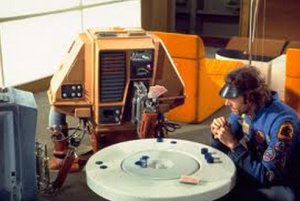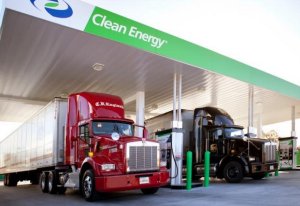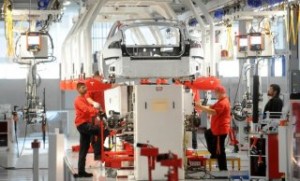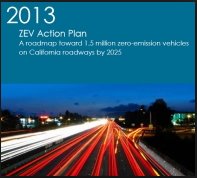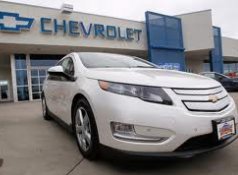GM and Mercedes-Benz join Nissan in race for driverless car launch
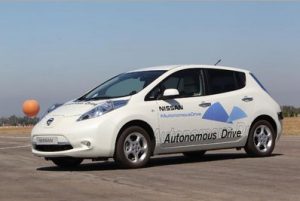 Nissan made a splash recently showing off its Autonomous Drive concept car (a driverless Leaf) that it says will come to market by 2020. Laser scanners, Around View Monitor cameras, as well as advanced artificial intelligence and actuators, have been installed in Leafs to enable them to negotiate complex real-world driving scenarios. General Motors is testing out Cadillac SRX prototypes at its Milford, Mich., proving grounds. GM is working out the kinks in its Super Cruise feature that it wants to launch by 2020. Mercedes-Benz demonstrated what it calls a “self-piloted” car at the Frankfurt auto show. Its S500 “Intelligent Drive” concept car drove autonomously along a 62-mile route in Germany last month. As for the year it should be available: 2020, which sounds like a very big year for driverless cars.
Nissan made a splash recently showing off its Autonomous Drive concept car (a driverless Leaf) that it says will come to market by 2020. Laser scanners, Around View Monitor cameras, as well as advanced artificial intelligence and actuators, have been installed in Leafs to enable them to negotiate complex real-world driving scenarios. General Motors is testing out Cadillac SRX prototypes at its Milford, Mich., proving grounds. GM is working out the kinks in its Super Cruise feature that it wants to launch by 2020. Mercedes-Benz demonstrated what it calls a “self-piloted” car at the Frankfurt auto show. Its S500 “Intelligent Drive” concept car drove autonomously along a 62-mile route in Germany last month. As for the year it should be available: 2020, which sounds like a very big year for driverless cars.
Spam attack defeated!!! Now, please leave your reader comments…..
For those of you who have written for a blog, you probably have experienced the extremely annoying scam of bot engines placing deceptive reader comments on the site. Green Auto Market was attacked by bots recently, where up to 50 fake reader comments a day were posted. However this works, there does seem to be some connection between certain trendy products and green cars (I can’t say which product it is, since that might place this blog once again on another bot’s list). A lot of the comments were in Japanese – WordPress does offer a translator software function if needed. The other common thread in the comments was someone hawking their services to increase SEO on Green Auto Market – thanks but no thanks. They might approach that by throwing out a series of compliments on how awesome Green Auto Market and its writer/editor are. Well, shucks…. but, thanks but no thanks. We used a plugin product called Simple Comments to alleviate the spam attack – so far, so good. That being said, this is a very good time for you to leave a comment – see the “Leave a reply” link at the top of each post. I will review it, post it, and occasionally write a reply to the comment. Another suggestion is to forward the newsletter email or a link to the blog website, encouraging peers to post their name and email address to join the subscription list. You’ll find that box in the upper right corner of the blog. Some readers are sharing articles from this blog in their newsletters, websites, and blogs. Together, we can stop spammers from dominating the internet!
Tesla-Mania! Tesla setting up stores in Germany
I might have been wrong: Maybe it was Tesla going after BMW and not vice versa. Tesla is setting up sales centers in Germany and will be able take on BMW directly. BMW has rolled out its i3 luxury electric car and showed off its i8 plug-in hybrid supercars at the Frankfurt Motor Show. Tesla is focusing on the German market to sell its Model S luxury electric car by setting up six stores. Four are in place – three sales centers are in Frankfurt, Dusseldorf, Hamburg, and Munich; two more stores are being set up Berlin and Stuttgart. “The European home turf belongs to the likes of Daimler, BMW and Audi,” said Bryan Batista, Tesla’s European sales director. “We’re confident that we have a product that stacks up very well.”
More bodacious claims from Mazda on its Skyactiv system
The Mazda CX5 with its Skyactiv technology is being compared to Thomas Edison and all his innovative inventions. Okay, so we have the surfing legend Laird Hamilton and Thomas Edison comparisons for Skyactiv – very impressive. How about Henry Ford? Or Albert Einstein?
Fuel cell vehicles get some good news in California
California Assembly Bill 8, which will fund at least 100 hydrogen stations in California, passed through the state legislature last week and is on its way to Gov. Jerry Brown’s desk; the governor indicated he’ll signed it during a news conference this week. AB 8 will provide funding for at least 100 publicly available hydrogen stations, with a commitment of $20 million a year (or 20% of available funds) until January 1, 2024. UK-based ITM Power, a fuel cell energy storage and clean fuel products company, just took its first US order for $1.4 million to support hydrogen refueling stations. ITM Power turns renewable wind and solar power into hydrogen gas using electrolyser technology, which creates on-demand clean fuel for cars, cooking, heating and welding. The company will supply an electrolyser-based unit for Hyundai’s hydrogen energy and fueling station in Chino, Calif.
Toyota gets into carsharing game in the US
Toyota Motor Sales USA is getting into the carsharing business through an alliance with City CarShare, which is considered to be the largest nonprofit carsharing organization in North America. The relationship has started with the Dash carsharing program in Pleasanton, Calif., for an employer’s needs and for their carpool, vanpool, and public transportation commuters. It’s a three-year pilot program that will delivery Scion iQ electric vehicles that were designed specifically for the carsharing market. Navigant Research just issued a report projecting that carsharing services will have more than 12 million members worldwide by 2020, up from the current level of 2.3 million.
Boulder Electric demonstrates V2G at three sites
Electric truck manufacturer Boulder Electric has successfully demonstrated its Vehicle-to-Grid (V2G) all electric trucks in three separate locations including Michigan, Colorado and California. With 60 kilowatts of power going in and coming out of the vehicles, Boulder EV reached a new milestone and became the first EV truck manufacturer in the world to successfully demonstrate V2G bi-directional charging at its first testing site at Royal Oak, Mich., back in June. The second project took place at the US Army Corps of Engineers and SPIDERS project in Carson, Col. Most recently, at Boulder’s plant in Los Angeles, the California Energy Commission award the company a $3 million grant to support opening its second plant.
National fuel economy number goes up to 24.9 mpg
Corporate average fuel economy is inching upwards each month. The University of Michigan Transportation Institute says that the August number for light-duty cars and trucks sold in the US reached 24.9 mpg, up 0.1 mpg from the previous month. It’s gone up 4.8 mpg since the university began tracking the numbers in October 2007.
ClipperCreek brings smallest Level 2 EV charging station to market
Veteran EV charging station maker ClipperCreek has announced the availability of what it claims to be the smallest cord and plug connected, 20Amp, Level 2 EV charging station on the market. Based on the company’s LCS-25, this new product features a plug in connection to make installation inexpensive and fast. With a standard 25 foot charge cable, there is no need to juggle cars to plug in. Customers with existing outlets can purchase the LCS-25P and install it by attaching it to the wall and plugging the LCS-25P into a 240V outlet. It’s for sale at a retail price tag of $549, with a 3 year warranty.
DOE may be settling for small chunk of Fisker’s debt being paid for
Fisker Automotive may have a buyer take care of its large debt with the US Dept. of Energy. Fritz Nols AG, a German investment company, appears to have placed its $25 million offer to the DOE, and its sounds like it could be moving forward. The parties signed a letter of intent for its restructuring plan. It might be a partial solution for the DOE to resolve some of the $193 million that the agency made available as a loan and which the extended range automaker has yet to pay back. Fritz Nols AG may not close the deal, though; other bids are being considered by the feds including one from Chinese auto parts maker Wanxiang Group (and owner of previously-named A123 Systems); and a Hong Kong-based investment group. It sounds like all of the bids are lower than the US government had been hoping for; yet, they may settle for less and walk away from Fisker.
Dark days ahead for Ecotality
Ecotality has a swirl of class-action lawsuits being filed against the electric vehicle battery charger company. Pomerantz Grossman Hufford Dahlstrom & Gross LLP has filed a class action lawsuit against Ecotality, Inc. in US District Court, Northern District of California. It’s been filed on behalf of a class consisting of all persons or entities who gained securities of Ecotality between April 16, 2012 and August 9, 2013. This class action seeks to recover damages as a result of alleged violations of the federal securities laws.
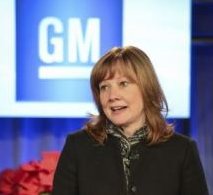 Changing of the guard is starting to happen in Motor City. Right after General Motors paid off the federal government for its post-bankruptcy bailout loan, CEO Dan Akerson announced he’s leaving his job and that GM is getting its first female CEO, Mary Barra. She’s previously served as senior vice president of global product development and has championed GM’s leadership role in electrified and fuel efficient vehicles. Ford Motor Co. is also flooded with gossip about its shining star CEO Allan Mulally leaving and going back to Washington to captain the Microsoft ship. As for Barra, ex-Chevy Volt guru and former GM vice chairman Bob Lutz had his usual bit of banter to share. On a Detroit radio talk show last week, Lutz praised Barra for leading GM’s product development and had something very Lutz-like to say: “I don’t know if you know what she looks like, but she is medium height with an attractive, athletic build, nice face — she’s not a little old lady with glasses; she is very athletic looking, very active and it’s easy to imagine her behind the wheel of a car.” So, she may not be a car guy, but she’s alright with Bob Lutz.
Changing of the guard is starting to happen in Motor City. Right after General Motors paid off the federal government for its post-bankruptcy bailout loan, CEO Dan Akerson announced he’s leaving his job and that GM is getting its first female CEO, Mary Barra. She’s previously served as senior vice president of global product development and has championed GM’s leadership role in electrified and fuel efficient vehicles. Ford Motor Co. is also flooded with gossip about its shining star CEO Allan Mulally leaving and going back to Washington to captain the Microsoft ship. As for Barra, ex-Chevy Volt guru and former GM vice chairman Bob Lutz had his usual bit of banter to share. On a Detroit radio talk show last week, Lutz praised Barra for leading GM’s product development and had something very Lutz-like to say: “I don’t know if you know what she looks like, but she is medium height with an attractive, athletic build, nice face — she’s not a little old lady with glasses; she is very athletic looking, very active and it’s easy to imagine her behind the wheel of a car.” So, she may not be a car guy, but she’s alright with Bob Lutz.


